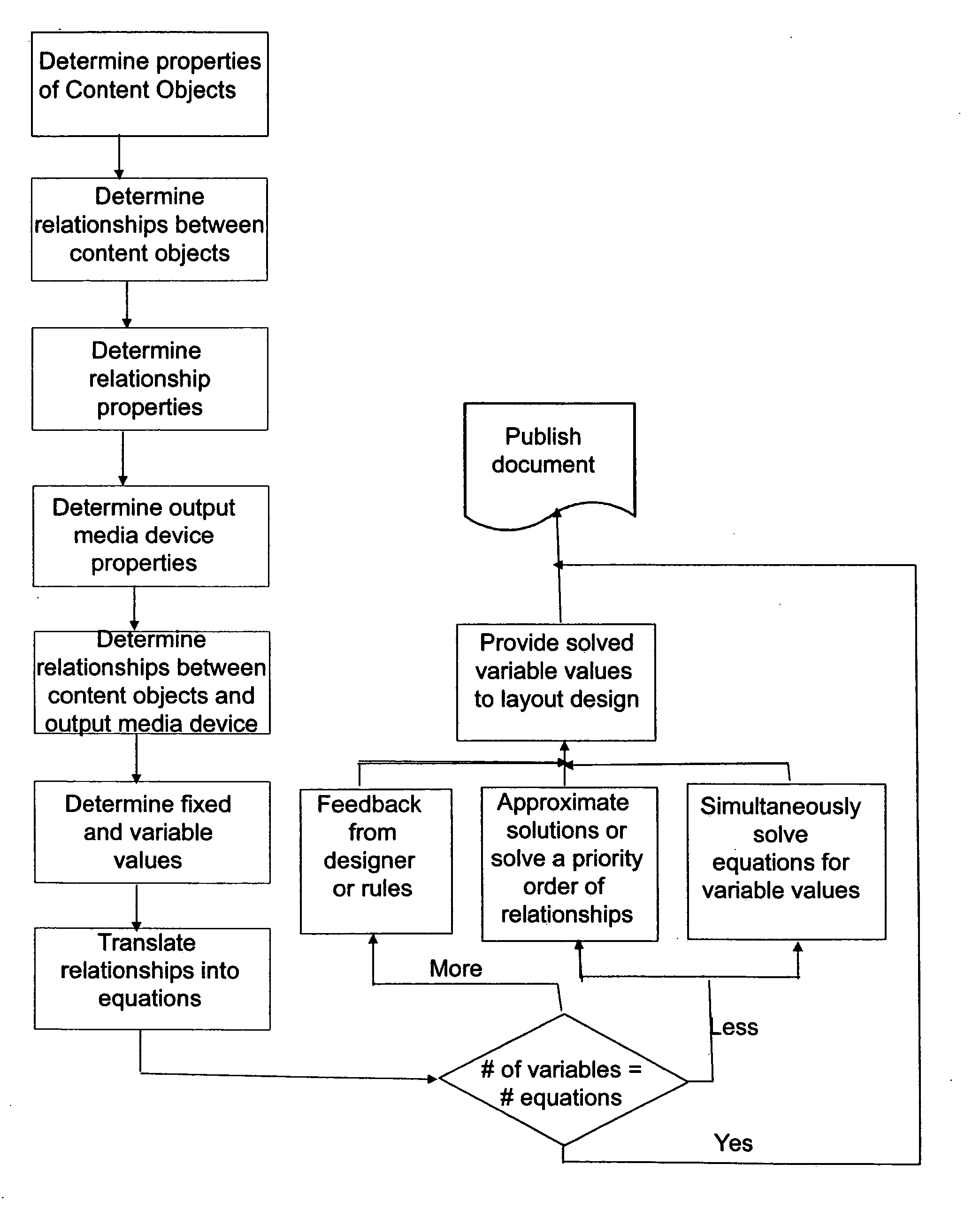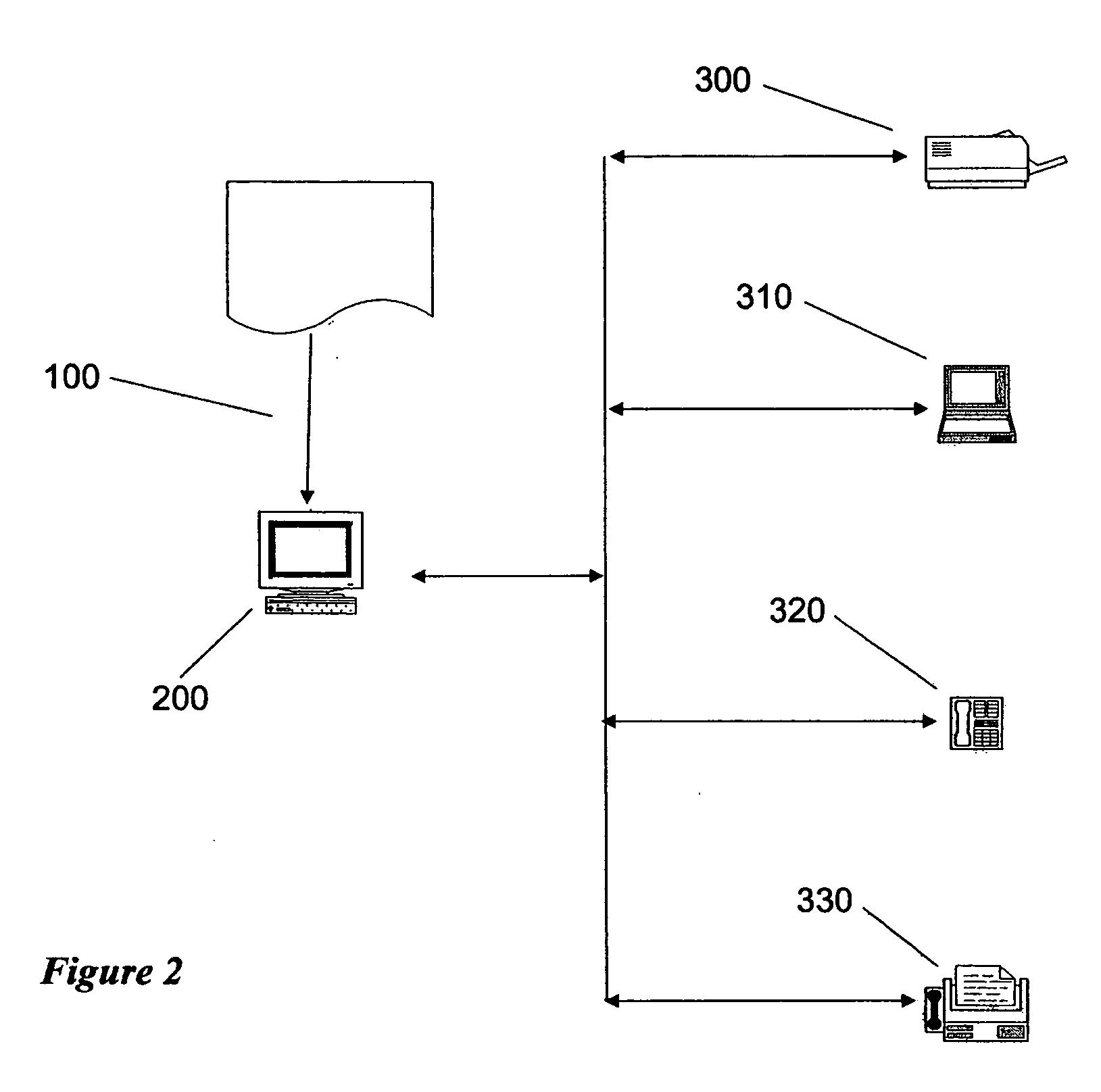Dynamic layout system and processes
a layout system and dynamic technology, applied in the field of dynamic layout system and processes, can solve the problems of limited designer creation of new documents in this fashion, multi-media devices of output media, and designers often confronted with the need to repurpose content between documents
- Summary
- Abstract
- Description
- Claims
- Application Information
AI Technical Summary
Benefits of technology
Problems solved by technology
Method used
Image
Examples
Embodiment Construction
[0018] The present invention provides systems and processes for dynamically arranging content for publication. The present invention, in a preferred embodiment, facilitates the capture, representation and utilization of publication design intent, content re-purposing and dynamic layout for differing output media devices, differing recipients, and at differing times. It is to be expressly understood that the exemplary preferred embodiments disclosed are for descriptive purposes and are not intended to limit the scope of the present invention. Other embodiments are within the scope of the claimed inventions.
[0019] The preferred embodiment of the present invention is intended for use in, but not limited to, a network environment including but not limited to Internet applications, intranet applications, wireless applications, other network applications, standalone computer applications and many other types of applications.
[0020] In a preferred embodiment of the present invention, the ...
PUM
 Login to view more
Login to view more Abstract
Description
Claims
Application Information
 Login to view more
Login to view more - R&D Engineer
- R&D Manager
- IP Professional
- Industry Leading Data Capabilities
- Powerful AI technology
- Patent DNA Extraction
Browse by: Latest US Patents, China's latest patents, Technical Efficacy Thesaurus, Application Domain, Technology Topic.
© 2024 PatSnap. All rights reserved.Legal|Privacy policy|Modern Slavery Act Transparency Statement|Sitemap



